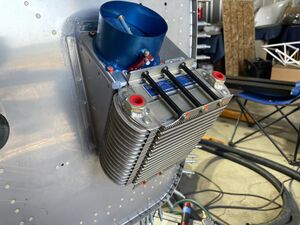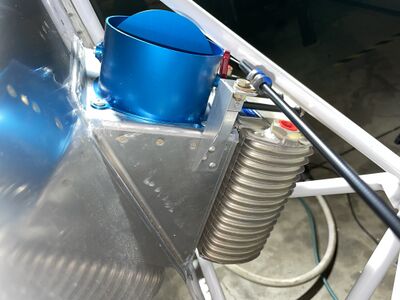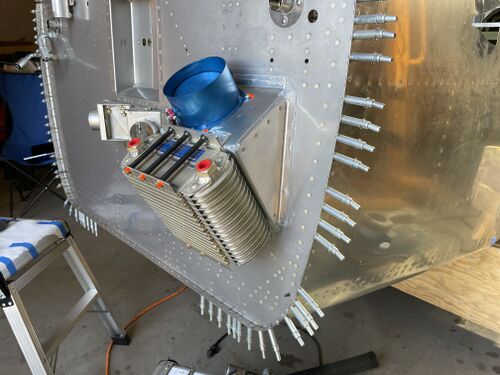Oil Cooler: Difference between revisions
Jump to navigation
Jump to search
m (→Damper) |
|||
| Line 7: | Line 7: | ||
*The upper forward flange needs to be trimmed to the inside of the most inner hole for the engine mount.<br>[[File:2023-04-23 16-40-23.jpg|300x300px]] | *The upper forward flange needs to be trimmed to the inside of the most inner hole for the engine mount.<br>[[File:2023-04-23 16-40-23.jpg|300x300px]] | ||
*The bottom outside hole needs to be fastened with a short AN3-4 bolt as a long bolt will not pass the engine mount. | *The bottom outside hole needs to be fastened with a short AN3-4 bolt as a long bolt will not pass the engine mount. | ||
*[[File:2023-04-27 19-52-53.jpg|400x400px]] | |||
Revision as of 14:31, 28 April 2023
Larger Oil Cooler
- Airflow Systems 2007X Oil Cooler
- Spacers and bolts
Note: the kit contains three longer bolts for the upper holes (use thick washers) and three slightly shorter bolts for the lower holes (use thin washers). - The larger oil cooler is taller. Add an angle bracket to the top for the top line of holes. Enlarge the cut-out of the Van's oil cooler bracket to utilize the topmost part of the oil cooler.
- The upper forward flange needs to be trimmed to the inside of the most inner hole for the engine mount.

- The bottom outside hole needs to be fastened with a short AN3-4 bolt as a long bolt will not pass the engine mount.

Damper
The engine-side oil temperature thermostat (vernatherm) opens at some 170F (measured at the port towards the oil cooler). At high altitude or in winter months, the oil cooler may cool down the oil too much (e.g. to 140F). Consider installing a damper that controls the air flow into the oil cooler. As a side effect, the cylinder heads get more cooling if the damper is restricting the flow through the oil cooler.
